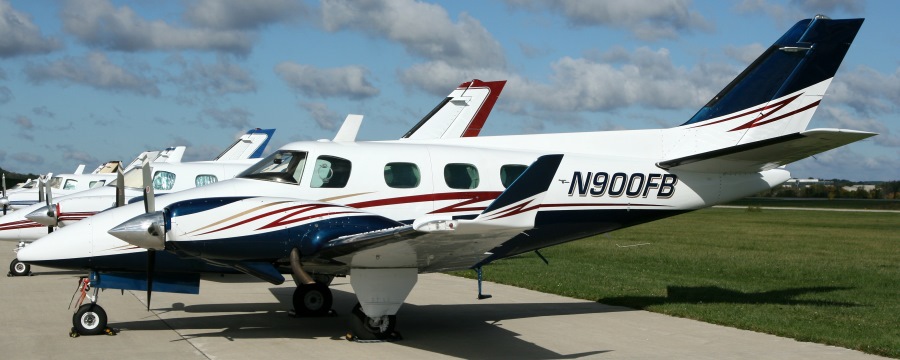What to Look for in Buying a Duke
There are three basic models:
| Model | Years | Serial Numbers |
|---|---|---|
| Straight 60 | 1968-70 | P4 - P126 except P123 |
| A60 | 1970-73 | P123, P127 - P246 |
| B60 | 1974-1983 | P247 - P596 |
MODEL 60
MODEL A60
MODEL B60
Engines are the important item. If they have been overhauled under 1000 hours, chances are they were not operated properly. If I had my choice, would choose one at TBO or just overhauled. Either way you would be starting out with engines you know have not been mistreated.
The Duke in some quarters is reported to be a maintenance hog. This has come as a result of people not knowing how to fly the airplane or poor/lack of proper maintenance. One also must realize an airplane with air conditioning, pressurization, and high performance turbocharged engines is going to cost more to maintain than a Baron or 310. Treat engines with respect and they generally will go to full TBO (1600 hrs). Our last set of engines exceeded TBO by 200 hours.
Abuse them by rapid movement of throttles in applying or reducing power and you have 800 hour engines. One of Duke's strong points is its ability to descend 1000' per minute at cruise power and still stay well in the green airspeed wise (which Cessna's can't do). Pull the power off to 12" and let down from 20,000' at 3500' per minute, you will have another 800 hr engine as a result of rapid cooling and possible detuning of counter weights.
Duke has high gear and approach flap speeds (174 Kts IAS), so if a rapid descent is necessary, you can come down 2000' per minute and still keep manifold pressure high enough to prevent rapid cooling and detuning.
What can you expect from a Duke? Expect to burn 43 - 45 gph (65%) on a long trip, 48 - 50 gph on a short one. The Duke is not a low altitude airplane. At 9000' it will not be any faster than a 58 Baron. Needs to be flown 17,000' and above to realize its potential. At 23,000' you have a comfortable 9000' cabin and are above most of the weather cruising 235 mph at 65% power.
Many Dukes have vortex generators. 1f the plane you buy does not, have them installed. Increased useful load almost 200 lbs. Shorter takeoff and landing. Vmc lowered to almost stall.
When the airplane is idle, oil drains from the oil filter and the lifters under compression resulting in high impact on the lifter surface when starting. The average Duke flies 130 hours a year leaving 8600 hours of time for oil to drain off the engine. Pre-oiling will fill filter and lifters prior to start.
Engine overhaul costs range from $25,000 to $45,000 which is a wide variation. You will get about what you pay for.
Many Dukes have been equipped with intercoolers, School is still out on their value, but here are some pros and cons:
| ADVANTAGES | DISADVANTAGES |
|---|---|
| More power on hot day | Added drag |
| Better rate of climb on hot day?* | Lose 80 lbs. in pay load |
| Cooler running engine | Possible to over boost engine on cold day |
* You must reduce MP by 2" to pull same percent of power as non-intercooled.
A very important item sometimes overlooked is a complete pre-purchase inspection by a knowledgeable A&P who maintain Dukes. Also, remember an inexpensive airplane may cost you more in the long run.
A couple of things to look for:
1. Generators should be overhauled every 500 hours.
2. Tail corrosion if airplane has been in a salt air environment.
3. Flap corrosion on early models.
If airplane is not equipped:
1. Install VG's
2. Install pre-oilers.
Duke Flyers Association, a group of 300 owners, has been successful in supplying information to reduce costs of operation and maintenance, as well as providing tips on flying this fine airplane, We would welcome you as a member - owner or not. See the Join Us page for more info.
